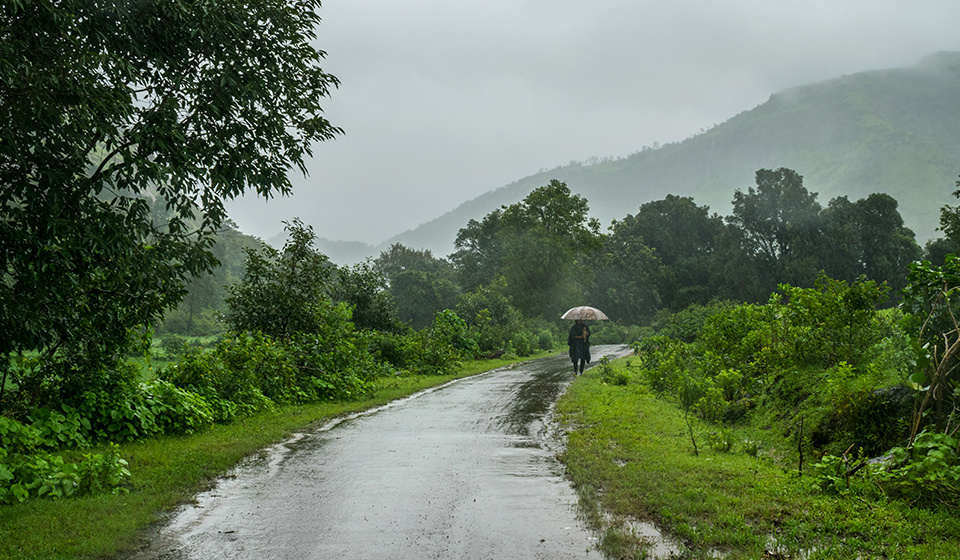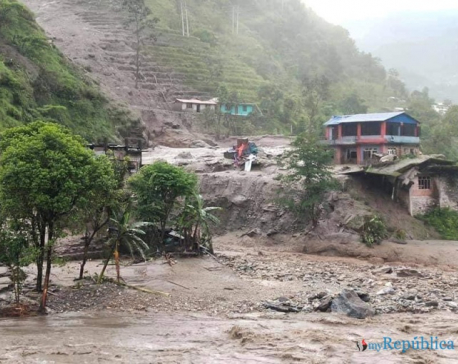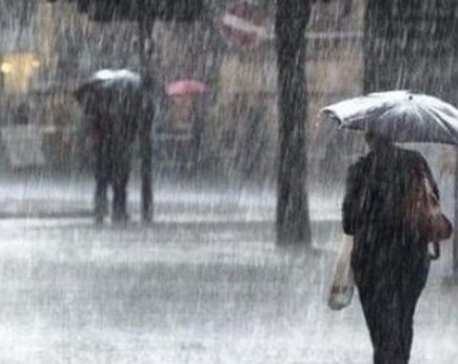
OR
#Editorial
Tackling the risk of monsoon-induced disasters
Published On: June 11, 2024 07:30 AM NPT By: Republica | @RepublicaNepal

The monsoon has arrived in Nepal three days earlier than scheduled this year, marking the onset of the rainy season. The Weather Forecasting Division of the Department of Hydrology and Meteorology announced that the monsoon commenced in Nepal’s Koshi province three days ahead of the usual date of June 13. While the entire Koshi region is not yet fully under the influence of the monsoon, this gradual progression is typical as the system advances from the east. This early arrival, while a relief to farmers, brings both excitement and concern as everyone braces for its impact. With this, Nepal prepares for another year of potential disasters induced by monsoon rainfall. Studies conducted by the National Disaster Risk Reduction and Management Authority (NDRRMA) project that over a million citizens across various provinces are likely to be affected by the monsoon. These alarming statistics demand immediate attention and action from the government to minimize potential risks and protect lives and property. Adequate preparedness on the part of the government is crucial to tackle impending monsoon-induced disasters, including floods and landslides.
The Department of Hydrology and Meteorology (DHM) has forecast that this monsoon season is expected to bring 35 to 55 percent more rainfall than the average. This is likely to worsen the risk of monsoon-induced disasters. The concerned government authorities must act to ensure rapid preparation to handle any situation resulting from the monsoon rainfall. Nepal's geography makes the country highly prone to landslides and floods during the monsoon season. Every year, thousands of people are displaced, losing their homes and livelihoods as a result. Given this vulnerability, it is imperative for the government to keep rescue teams on standby and ensure their readiness to respond promptly in case of any emergency. Moreover, central, provincial, and local governments must formulate contingency plans to swiftly dispatch essential supplies to people in affected areas. While the efforts of federal and provincial governments are crucial, local-level governments must play an active role in disaster management. They need to allocate resources specifically dedicated to dealing with the impact of monsoon-induced disasters. Identifying and relocating vulnerable populations to safe locations, developing trained manpower, and arranging necessary resources should be prioritized at the local level. By doing so, they can significantly contribute to reducing the devastation caused by such disasters.
As the monsoon season arrives in the country, effective coordination among all three tiers of government becomes paramount. The central, provincial, and local governments must work together seamlessly to provide a better response to those affected by monsoon-induced disasters. By sharing information, resources, and expertise, they can enhance their ability to mitigate the risks and ensure the safety and well-being of the citizens. The projected number of individuals likely to be affected by monsoon-induced disasters is staggering. It is an urgent wake-up call for the government to take immediate action. Strengthening disaster management efforts, enhancing preparedness, and improving coordination among different levels of government are essential to minimize potential risks and protect the lives and livelihoods of the people. As the monsoon season approaches, it is crucial that the government takes these recommendations seriously and acts swiftly to safeguard its people from the destructive forces of nature.
You May Like This

Monsoon death toll doubles in three days due to incessant rainfall
KATHMANDU, July 8: Since the onset of the monsoon, a total of 62 people have died, with four people reported... Read More...

Monsoon spreads across Nepal
KATHMANDU, June 23: The Department of Hydrology and Meteorology (DHM) of the Meteorological Forecasting Division (MFD), in a regular bulletin... Read More...

Monsoon entered Nepal on Wednesday
KATHMANDU, June 15: This year's monsoon has entered the country since Wednesday. Though monsoon generally remains active in the country... Read More...







Just In
- NRB to provide collateral-free loans to foreign employment seekers
- NEB to publish Grade 12 results next week
- Body handover begins; Relatives remain dissatisfied with insurance, compensation amount
- NC defers its plan to join Koshi govt
- NRB to review microfinance loan interest rate
- 134 dead in floods and landslides since onset of monsoon this year
- Mahakali Irrigation Project sees only 22 percent physical progress in 18 years
- Singapore now holds world's most powerful passport; Nepal stays at 98th











Leave A Comment